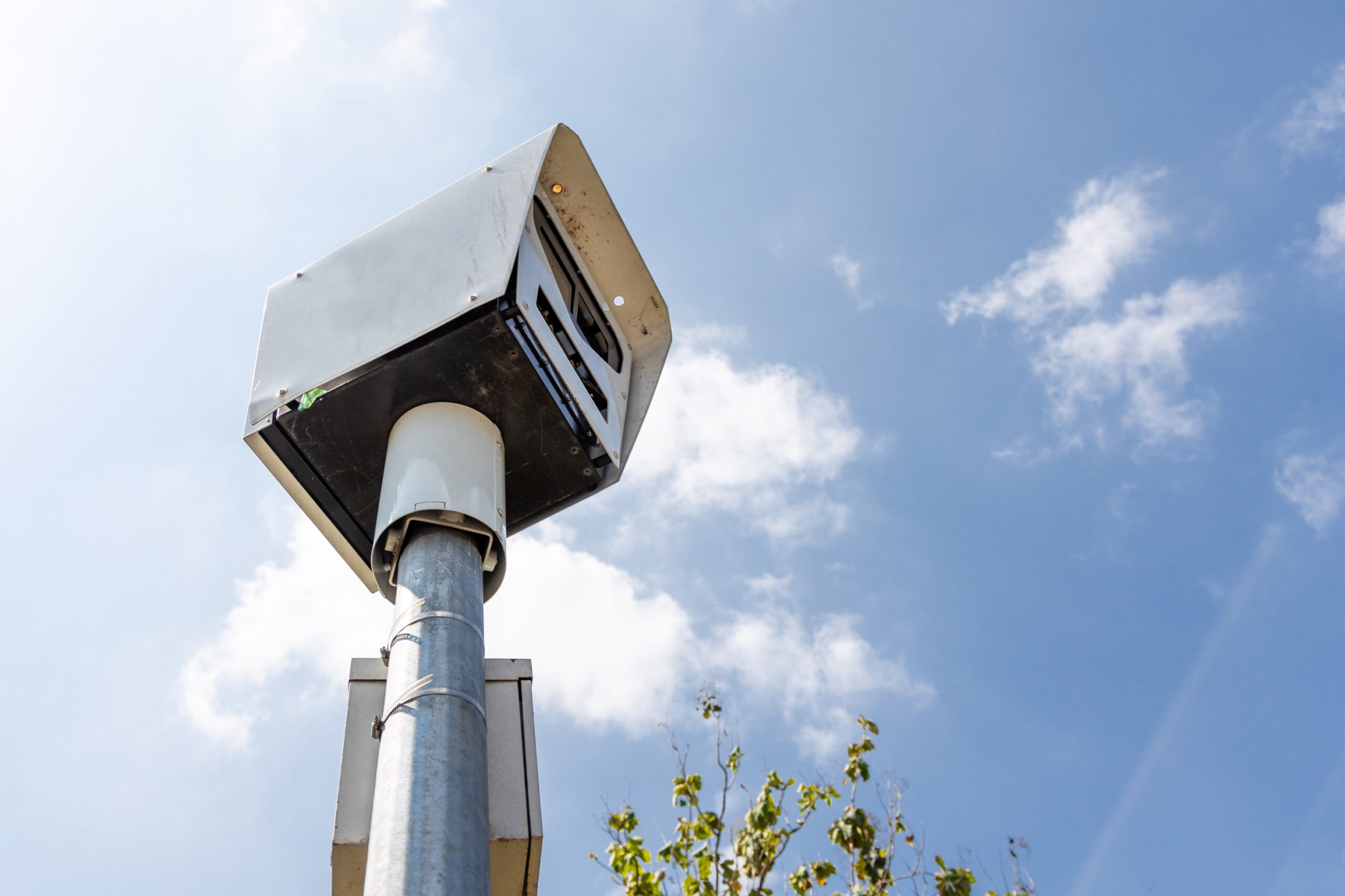Types of Radar Speed Measuring Devices Used by Kansas City Police

Likely one of the most frequent traffic citations issued in Kansas City is speeding. Law enforcement uses radar speed-measuring devices to apprehend individuals who are driving over posted speeds. The following is how the device operates: it emits radio waves to measure a specific vehicle’s speed.
While all radar devices operate on the same scientific principle, they come in different types and sizes. There is a specific use for every type, and they are used based on the environment, officer position, and traffic flow.
The way these devices operate makes drivers more sensitive to how the police enforce speed and how mistakes could be committed in speed enforcement.
Stationary Radar Units
Stationary radar units are the most common technology used by Kansas City police officers. They are fixed on permanent sites — either on vehicles parked alongside highways or on stand-alone poles.
They operate by sending radio waves along the road. When a passing car enters the radar beam, the waves bounce back to the unit. The radar measures the frequency change of the returning signal to calculate the speed of the car.
Fixed radar units are quite helpful in monitoring particular areas, including:
- School zones
- Construction zones
- Complaint-prone intersections
- Highway sections with high accident rates
Because these units are fixed, they yield consistent readings without the motion of the patrol car affecting the result.
Kansas City police officers most likely use Doppler-based radar for fixed applications. These radars can identify the speed of the oncoming or receding vehicles.
Each unit must be calibrated daily to maintain accuracy. Tuning fork tests are also performed by officers before and after use. In the absence of calibration records, evidence of tickets can be used against the officers in court.
Moving Radar Systems
Patrol car-mounted mobile radar units allow police to record speeding while en route. These units can measure the target vehicle speed and the patrol car speed at the same time.
They work with two radar beams:
- One measures the ground speed of the patrol car.
- The other measures the relative speed of the target car.
The computer within the radar subtracts from and displays the target’s actual speed.
These radars enable police officers to apprehend speeding motorists on highways during rush hour without stopping and pulling them over. They are most typically utilized on highways like I-70, I-35, and US 71 — Kansas City highways that are congested and fast-moving.
Moving radar equipment is more advanced and prone to issues like:
- Reflected signals from other vehicles.
- Multiple targets within a single beam.
- Minor misalignment is causing “cosine effect” errors.
At Speeding Ticket KC, Kansas City defense attorneys regularly review radar training records to see if officers followed the correct setup procedures for mobile radar systems.
Handheld Radar Guns
Handheld radar guns are portable and easy to use. They allow officers to stand on the sidewalk or at corners to monitor speed.
They work by aiming a focused radar beam at a moving vehicle. As the radio waves bounce back, the radar calculates the vehicle’s speed immediately.
Handheld radar guns are portable and battery-powered. They’re perfect for:
- Neighborhood patrols
- School zones
- Speed enforcement in parking lots
- Temporary traffic control zones
Most handheld radar units work on K-band or Ka-band frequencies, providing high accuracy with quick results.
However, consistent hold and distance are required for radar guns. Should the hand flutter, the radar beam will be deflected, and minor reading discrepancies will occur.
Kansas City police officers are routinely taught how to operate radar guns in an effort to promote appropriate use and to achieve Missouri Highway Patrol certification levels.
Automatic Radar Units (Speed Display Signs)
You have probably noticed radar display signs flashing your speed on Kansas City roads. These are automatic radar displays that measure vehicle speed and display it to the driver in real time.
They are intended to promote voluntary speed reduction, not to write tickets.
They operate with the same Doppler radar technology as police cars, but are designed only to display speed. These devices assist in reducing speeding in:
- Residential areas
- School zones
- Downtown and business districts
Some of them also record traffic data, which is then used by the police to decide future high-speed sites to target for enforcement.
While automatic radar devices do not give citations, their readings can be used for directed patrol planning by the Kansas City police.
Dual-Antenna and Directional Radar Devices
Dual-antenna and direction radar devices are newer radar devices that are mounted in Kansas City police vehicles. These can track more than a single vehicle driving in various directions.
Dual-antenna radar uses two separate transmitters — a forward- and rear-facing transmitter. This allows officers to monitor vehicles approaching from either side of the police vehicle.
Directional radar includes yet another reading that considers the direction of travel — whether the vehicle is approaching or receding from the officer.
These features reduce human error by helping officers confirm which car the radar is picking up. It’s especially handy on multilane freeways when there are a lot of cars traveling at different velocities.
Officers also can switch between moving mode and stationary mode, depending on whether it’s a foot patrol or a mobile patrol.
Accuracy does depend on correct setup, calibration, and environmental conditions. Weather fluctuations, wide trucks, or freeway dividers can affect readings.
Defense lawyers regularly request radar configuration and calibration reports when they are present in court to assist in confirming the accuracy of such devices.
Radar Frequency Bands Used in Kansas City
The majority of radar devices employ three frequency bands:
- X-band (10.525 GHz): Very old and barely utilized nowadays. It possesses a wide area range but is readily prone to interference.
- K-band (24.150 GHz): Common usage in Kansas City. It offers an excellent compromise between range and precision.
- Ka-band (33.4–36.0 GHz): More up-to-date and precise, typically in newer radar guns.
All bands travel differently as a signal, so officers must be trained to compensate for that when reading speed.
Radar Calibration and Officer Training
All Kansas City police equipment that employs radar is certified and calibrated regularly. Officers calibrate radar devices with tuning forks vibrating at known frequencies to ensure precision.
If the officer isn’t licensed or uses a non-calibrated device, the reading won’t be admissible in court.
Speeding Ticket KC consistently examines these factors in representing clients against radar speeding citations.
Can Radar Devices Be Wrong?
Yes, radar devices can err. Even brand-new radar can provide inaccurate readings if conditions are not ideal.
Some of the common causes of radar malfunction are:
- Interference caused by reflective surfaces or big trucks.
- Operator movement with hand-held weapons.
- Incorrect aiming angle.
- Severe weather conditions like heavy rain or wind.
- Power lines or radio equipment in proximity.
A slight deviation in angle or calibration is sufficient to alter the reading and affect your ticket.
Legal Defenses to Radar-Based Speeding Tickets
Not all radar tickets hold up in court scrutiny. Some of the common Kansas City legal defenses are:
- Challenging radar calibration reports.
- Verifying officer certification.
- Establishing interference or environmental distortion.
- Presenting misuse of a radar.
Speeding Ticket KC helps clients fight such tickets by establishing all the evidence and radar readings to be legal requirements.
The Importance of Knowing Radar Devices
Knowing how radar devices work helps drivers understand why certain readings are inaccurate. A radar ticket seems impossible to fight, but slight mistakes in setup, alignment, or calibration can be everything.
If you’ve been issued a speeding ticket based on radar proof, it would be reasonable to know the equipment on which it was done so that you can dispute it effectively.
Speeding Ticket KC has been helping drivers across Kansas City reduce penalties, avoid points, and remove records for decades.
Frequently Asked Questions About Radar Speed Measuring Devices
1. What is the most common form of radar used by police in Kansas City?
Most use moving and handheld radar units with K or Ka frequency bands.
2. How often should the police radar be calibrated?
Radar devices are checked daily and have to be tuned using tuning forks before and after usage.
3. Does radar allow for detecting vehicles in both directions?
Yes. Double-antenna and directional radar devices can track multiple directions simultaneously.
4. Is bad weather a determinant for the accuracy of radar?
Yes. Rain, snow, or strong winds will distort radar signals and give false readings.
5. May I challenge a speeding ticket issued with the use of radar?
Yes. Speeding Ticket KC can dispute radar-issued tickets by examining records of calibration and training of officers.
Wrap Up
Radar speed-measuring systems are the backbone of Kansas City traffic enforcement. Handheld guns and high-level dual-antenna systems both have limitations and disadvantages.
Though these units promote safe roads, they are not foolproof. Minor technical glitches or human errors may cause unjustified citations.
If you have received a speeding ticket based on radar, Speeding Ticket KC will evaluate your case for you, examine radar evidence, and contest the charge in an established way.

